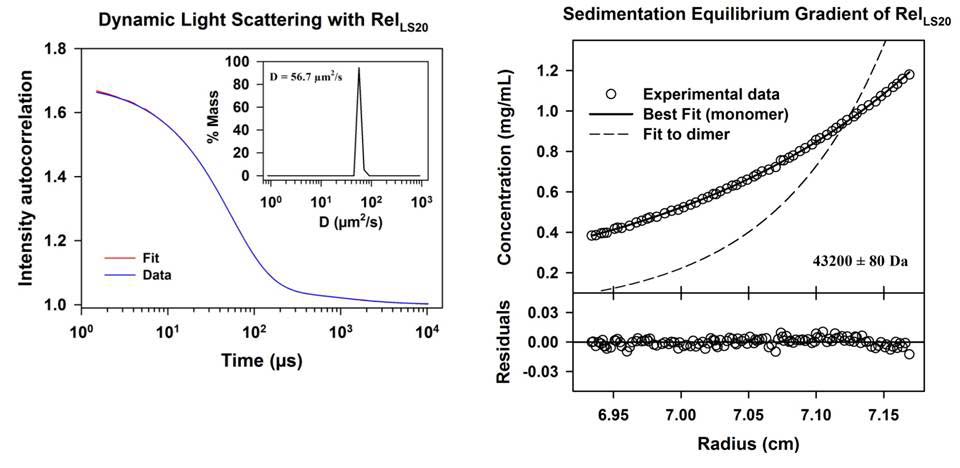
The phenomenon of antibiotic resistance and its spread is one of the most important threats to health. Genes that confer this resistance are present in genetic elements that can be transferred to other bacteria through bacterial conjugation. This process is little known in Gram-positive bacteria, as is the case of Bacillus subtilis, belonging to the Firmicutes phylum, very abundant in the intestinal microbioma. A critical step in bacterial conjugation is the cleavage by the enzyme relaxase in one of the strands of the conjugative plasmid over a specific sequence of the oriT region.
A study published in PLOS Genetics and led by Dr. Wilfried JJ Meijer of the Severo Ochoa Center for Molecular Biology (CSIC-UAM), with the participation of the Analytical Ultracentrifugation and Light Scattering facility of CIB, presents the identification and characterization of both the oriT region and the RelLS20 relaxase of the Bacillus subtilis pLS20 conjugative plasmid.
This biophysical and structural characterization of RelLS20 (association state, size and hydrodynamic shape) carried out in the CIB has contributed, along with the genetic analysis, to establish that RelLS20 is probably the prototype of a new family of relaxasas, whose function is still unknown.
Reference: Discovery of a new family of relaxases in Firmicutes bacteria. Gayetri Ramachandran, Andrés Miguel-Arribas, David Abia, Praveen K. Singh, Isidro Crespo, César Gago-Córdoba, Jian An Hao, Juan Roman Luque-Ortega, Carlos Alfonso, Ling J. Wu, Roeland Boer and Wilfried J.J. Meijer. PLOS Genet. (2017) doi: 10.1371/journal.pgen.1006586
Additional information:
CSIC Press: http://bit.ly/2lGoxfY
http://www.madrimasd.org/informacionidi/noticias/noticia.asp?id=68382

